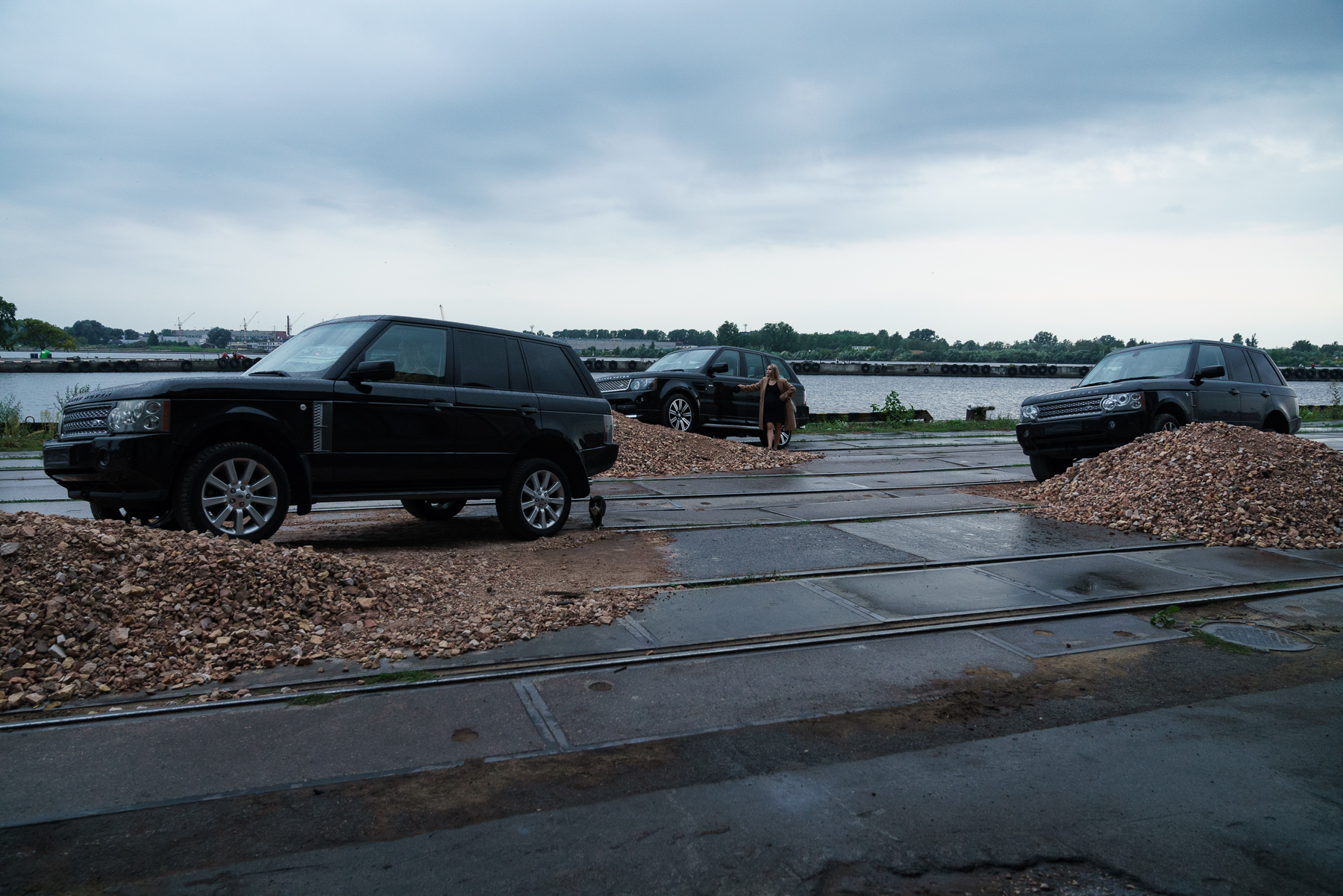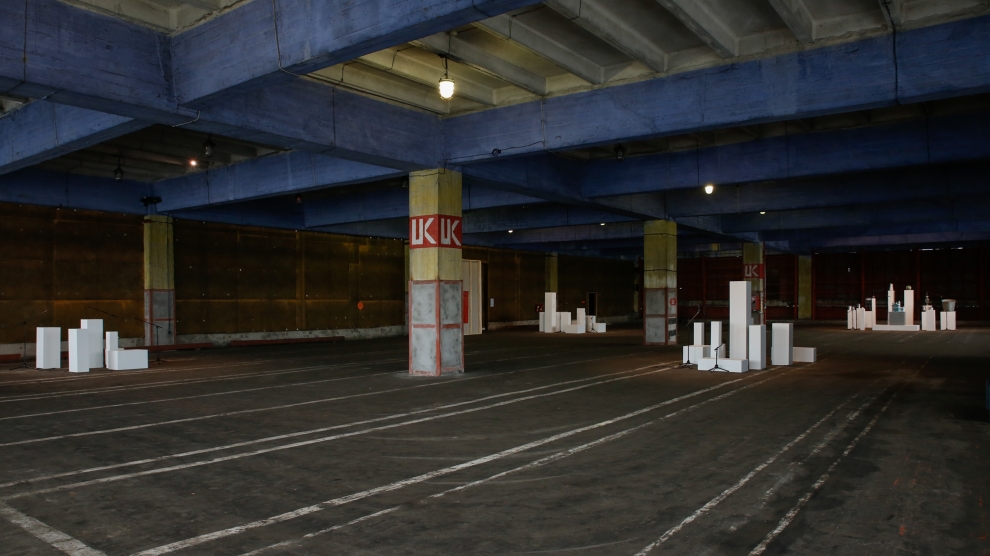As emerging Europe, and the rest of the world, settles into the new normal, aspects of our day-to-day lives are evolving. While contact sports, clubbing, and crammed metros come to the front of our minds when we think of what is now confined to the realms of a pre-Covid world, months on, other, less expected changes to everyday life are arising. One of these being the gallery experience.
Across the region, galleries and museums have done their best to cater to a contactless and travel-free world, implementing a more permanent set of rules as the situation has become more predictable. Like most galleries, Warsaw’s Museum of Modern Art has opened back up, but with stricter measures in place, like no group gatherings, and masks and temperature readings mandatory. Similarly, the National Gallery in Prague only allows entry with pre-booked registration, and attendees must follow a certain direction during their visit.
Establishing this distance to comply with Covid-19 guidelines and regulations can have an overarching impact on how art is consumed. Curators across the region are now having to ensure that art is not just for art’s sake, but for safety’s sake as well.
Distance, hollowed out galleries and designated routes can all impact the consumptive experience and can oftentimes degrade how art is perceived. Yet what has suffered most has been interactive and immersive art, a medium that, until the pandemic, was having a golden age.
Touching artworks, interacting with artists, putting on headsets, and lounging on furniture all ensured a stronger relationship between the viewer, the art, and the artist, encouraging a shift in the way art is seen. It became something animated and utilitarian, where the viewer can become the artwork, rather than an untouchable piece perched high on a white wall.
Now that galleries are establishing rules to fit in with the new normal, it appears as if the galleries around the region, particularly those that showcase or specialise in modern and contemporary art, are feeling the full force of the pandemic.
Rebecca Lamarche-Vadel, the curator of the Latvian Biennial RIBOCA 2, tells of how the pandemic required a significant re-imagining of the exhibition. The biennial, which was originally meant to focus on apocalyptic themes, is now even more poignant, yet the original ideas of interaction and immersion had to be revised entirely. This of course not only impacted logistics but the artistic experience as a whole.
“Reimagining the format has required us to be flexible, open and united – qualities which may become crucial, highly valued and even required from all of us in the future; or, more precisely, in our new collective reality, may now be changed forever,” Agniya Mirgorodskaya the Founding Director of the Riga Biennial, tells Emerging Europe, “No longer Covid secure, participatory works had to be adapted. At RIBOCA2, COVID-19’s signature is present in the unfinished, the reconfigured, and the reimagined. The artworks on display dialogue with those we could not ship, finish or even start making due to the abrupt pause in global dynamics and production systems.”
For example, a work by Polish sculptor, Pawel Althamer, called the Draftsmen’s congress by one, envisioned a collective group drawing in which participants share tools and ladders and scrawl and doodle all over a designated space. This is of course, now no longer possible.
Instead, curators decided to leave the 43,000 square foot space that was supposed to hold his work empty. “It was extremely important to keep the ghosts of what it was supposed to be. I think the ghosts are as loud as the work itself,” says Ms Lamarche-Vadel.
The gallery experience has also been significantly impacted by the lack of travel, restricting the accessibility of viewers to art, and artists to galleries. In order to re-adapt, organisers of the RIBOCA 2 have filmed the project, and as Ms Lamarche-Vadel explains: “anyone who is at the biennial may become an actor”.

In this sense, while tangible art is no longer an option for many curators, art is flexible and good artists reflect and adapt to the times they are in.
“[Galleries,] being anthropocentric institutions, they are primarily trying to save and support the human now. As never before, museums offer a large number of remote lectures, online collections, workshops and recommendations on how to meet the challenges of today,” says Yulia Vaganova, the deputy director of museum and exhibition activities at the Mystetsky Arsenal in Kyiv.
While this can be difficult when the digital space is overcrowded with news, and information, galleries are adapting.
Romania’s National Museum of Art now offering virtual tours through its website, as are many other galleries, where art can now be viewed through a screen. The gallery has also launched an app called ARTmobile in an effort to keep the art accessible.
Forty works are detailed with written and oral descriptions, as well as 15 theatrical presentations and 17 short films. This has allowed the gallery to ensure that art is still being consumed and offering respite, especially at a time that needs it most.
However, curators do acknowledge the difference this can have on the consumptive experience. Zooming in on a screen doesn’t have the same intimacy as observing a painting at close proximity, not to mention the difficulties of interactive exhibitions.
Yet, as Ms Vaganov explains, “not all real-life experiences can and should be copied. We are facing the challenge of creating other formats of knowledge about the museum. We need to invent a new language and talk about the value and uniqueness of the old one, but not imitate it.”
She notes that this was particularly true of a recent Japanese art exhibition that she worked on. Instead of the artists attempting to stimulate calligraphy with a tablet or computer, they created art using algorithmic design. An artwork in its own right, rather than an imitation.
Instead, the retreat of galleries to the distance, and the digital, can be seen as an opportunity. “This internal resistance is not against the online programmes of the museums, but only a call to think about whether all formats can be renamed and transferred to the internet. Let’s keep doing all of our online programmes, but let’s call them by what they are,” Ms Vaganov continues.
In Riga, the Biennial had to be rethought entirely, and was moved to a partially abandoned, open-air peninsula, rather than its usual multi-venue format. “The area is somewhere between a ruin and a renovation site, mirroring the current state of the world,” explains Ms Mirgorodskaya, as the pandemic allowed an unprecedented opportunity to rethink existing formats of exhibition design.
“Our chief curator Rebecca Lamarche-Vadel re-imagined the curation as a four – five-hour wander – the exhibition’s path has been envisioned as an encounter with other rhythms, a stroll through contemporary ruins, and an invitation to consider a new world growing out of them,” she continues.
After all, while interactive art forms may have to take the back seat for a while, the age of social distancing has allowed for a new form of digital art to take the spotlight with newfound legitimacy. The curators of emerging Europe, along with its talented artists, now have a chance to adapt and shape the online form into its own medium, rather than as a substitute for another.
Like the 43,000 square metre empty space that now stands in RIBOCA 2, art that has been distorted by the pandemic, is now an artwork in itself.
“As conventional ways of making, thinking and experiencing are being profoundly challenged, the need to reimagine exhibition formats and access seems more pressing than ever,” Ms Mirgorodskaya concludes.
—
Main photo: Simple Rights, Unattained Goals (Household Gods (Aspazija)) by Oliver Beer at RIBOCA. Photo by Hedi Jaansoo.
—
Unlike many news and information platforms, Emerging Europe is free to read, and always will be. There is no paywall here. We are independent, not affiliated with nor representing any political party or business organisation. We want the very best for emerging Europe, nothing more, nothing less. Your support will help us continue to spread the word about this amazing region.
You can contribute here. Thank you.







Add Comment